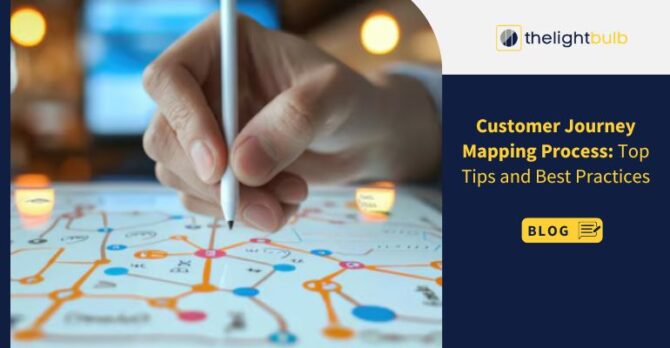
Regardless of the business, establishing quite an insight into the customer journey cannot be overemphasised, especially for companies that require boosting up their customer satisfaction policies. Customer journey mapping then helps in outlining the areas where a customer comes into contact with a brand, and this is useful in determining where challenges are or opportunities for enhancing touchpoints are present. This blog post aims at explaining the concept of mapping, understanding customer journey, and top and best practices of mapping to enable one get the best insights.

- What is Customer Journey Mapping?
- Why is Customer Journey Mapping Important?
- Steps to Create a Customer Journey Map
- Research and Gather Data:
- Create Customer Personas:
- Identify Touchpoints:
- Map the Current Journey:
- Design the Ideal Journey:
- Implement Changes:
- Monitor and Iterate:
- Involve Stakeholders:
- Use Real Customer Data:
- Keep the Customer at the Center:
- Be Detailed but Clear:
- Regularly Update the Map:
- Segment Your Customers:
- Focus on Emotions:
- Leverage Technology:
- Actionable Insights:
- Integrate Across Channels:
- Measure Impact:
- Top Benefits
- Flexible Options:
- Affordable:
- Fast & Reliable:
- Geography Agnostic:
- Trusted by Industry Leaders:
- Get Qualitative Responses:
What is Customer Journey Mapping?
Customer journey mapping is basically a process of mapping out in a clear manner all the touchpoints of a customer while doing business with your company. It runs from the early stages where potential customers are made aware of the product to the stage at which they make a purchase or obtain the product from the seller or a third party. The purpose is to develop the multi-uses map of the customer experience in order to pin down the space that require improvements and can be optimised.
Why is Customer Journey Mapping Important?
Customer journey mapping is essential for several reasons:
Enhanced Customer Experience: It helps to understand the specifics of how the customers perceive your service, and thus, adapt more effectively to them.
Increased Customer Retention: It is possible that there are certain areas of dissatisfaction that require one’s attention, which can drive consumers away and result in a low retention level.
Improved Marketing Strategies: This explanation is helpful in developing market communications as it outlines the following customer stages:
Operational Efficiency: Organisational efficiency can be obtained as long as the processes that are deemed fitted for being streamlined are based on customer analyses needed.

Steps to Create a Customer Journey Map
Define Your Objectives:
It is critical to provide a clear definition of the expectation on the customer journey map that you want to achieve. Are you more concerned with change that addresses a single aspect of the customer relationship or do you need a view of the entire customer interaction?
Research and Gather Data:
Gather primary and secondary information from customers, qualitative and quantitative tools, website usage, and CRM database. It contains information about the consumers which helps in understanding their buying patterns and habits.
Create Customer Personas:
Create specific customer avatars that encompass the results of the study. These personas cover a portion of your readership base and serve as a way of categorizing people according to their characteristics.
Identify Touchpoints:
Enumerate all the pillars of customer contact that are available to the target market. This entunes both virtual channel (website, social media) and actual channel ( store visitation, telephone conversation).
Map the Current Journey:
Based on the data collected, it will be pertinent to develop a map of the customer journey as it prevails at present. Underline phases of the decision making process like pre-purchase, preliminary, final decisive phase, and post-purchase.
Identify Pain Points and Opportunities:
Walk through the map in order to discover which points of interaction may be problematic or stressful for the customers. Seek the ways to improve each stage further.
Design the Ideal Journey:
Thus, in line with your analysis, map out an ideal customer journey. This should help address the highlighted hype points as well as the opportunities for enhancement.
Implement Changes:
Implement the changes needed to align the actual customer journey with the ideal one. This might involve process changes, staff training, or new technology adoption.
Monitor and Iterate:
Ensure that you keep track of the journey and look for ways to gather feedback at every stage. To make constant improvements and keep the journey on track with consumer views and expectations, use this data.

Top Tips for Effective Customer Journey Mapping
Involve Stakeholders:
Incorporate various departments in the mapping process. It is also important to note that valuable input can be gained from the sales, marketing, customer service and the IT departments.
Use Real Customer Data:
It is also important that you only map what is real and not mere speculation. This makes the map to be precise and valuable when it comes to decision making.
Keep the Customer at the Center:
Always interpret each step from the consumer’s standpoint. This assists in unearthing real problems and possibilities for improvement.
Be Detailed but Clear:
While it should be professional and detailed, a few checks must be made to make the map easily comprehensible. Instead of creating text-heavy documents, use elements such as diagrams and flowcharts to enhance the document’s narration.
Regularly Update the Map:
Stay on your toes: Customer behaviours and expectations are not created in concrete, thus your journey map should also not be. Probably, this will be updated frequently to keep it as operational and resourceful as possible.
Best Practices for Customer Journey Mapping
Customer Journey Mapping of the customer journey involves setting key objectives and goals for the mapping process and the contact points to be mapped and follows best practices which include
Segment Your Customers:
Some segments may move through awareness, consideration and purchase at different points. You are advised to create segment level maps in order to achieve better clarity about each major segment.
Focus on Emotions:
Given these, a company should focus on the feelings that customers may experience at each stage of the purchasing process. It is also worth mentioning that such emotional insights might be rather effective in eliminating problematic aspects.
Leverage Technology:
Alleviate the burden with the help of customer relationship management systems, analytics, and custom journey maps.
Validate with Real Customers:
Once you have your map you have to test it on actual users. This can best done through conducting focus forums or feedback polls among your customers.
Actionable Insights:
The outcomes of your map should ensure that proper follow-up actions are undertaken. Formulate a clear action plan that should be adopted in the implementation of the change finds out.
Integrate Across Channels:
This strategy concludes that a customer engages with a brand through several touchpoints. It is crucial that the touchpoints designed on the journey map encompass both conventional and digital media.
Measure Impact:
Once changes are incorporated into the company, identify the assessment of change efficacy using customer satisfaction, retention rates, and sales. This assists in assessing the impact of the efforts on the sales of products or services you are marketing.

Top Benefits
Flexible Options:
This allows a range of flexibility with timescales and methods depending on the exact nature of your customer journey testing requirements.
Affordable:
The features included in our solutions are made with affordability in mind, therefore CJ analysis can be applied by any business.
Fast & Reliable:
Access faster and more accurate customer tracking with real time data processing of the customer journey.
Geography Agnostic:
Ensure that customer journey mapping and analysis can be conducted at any location because of the fast development of technology in the global market.
Trusted by Industry Leaders:
Be a part of enterprises using our sophisticated consumer journey analysis for its strategic business values.
Get Qualitative Responses:
Combine value-generating quantitative facts with the critical touch of human emotion for a true assessment of customer touch points.
Conclusion
CJM is considered to be an effective approach that must be employed when customer experience is under consideration. By the end of completing each step in the process and adopting STP, you can get an exciting understanding of the customers’ needs and behaviors. And this, in its turn, will help to pave the right strategies, evaluating the level of customer satisfaction, and bring your business to a new level. To perform the customer journey mapping with effect, begin with it from now and observe its impact.











